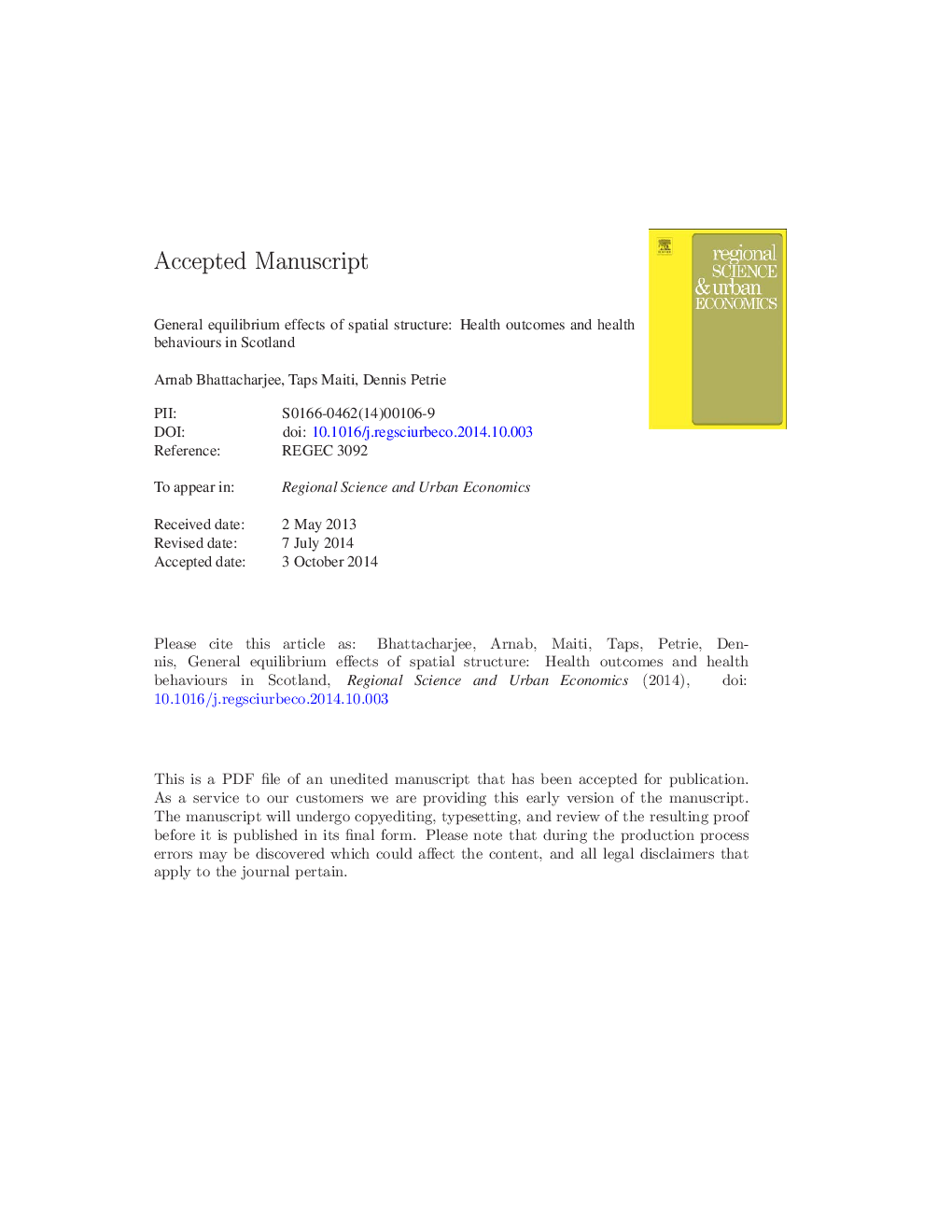| Article ID | Journal | Published Year | Pages | File Type |
|---|---|---|---|---|
| 7383921 | Regional Science and Urban Economics | 2014 | 29 Pages |
Abstract
Socioeconomic characteristics, health behaviours, and the utilisation and quality of healthcare are prime examples of socioeconomic, cultural and demographic phenomena that are inherently spatial in nature. Understanding the spatial structure of these factors is particularly relevant in order to efficiently allocate resources. This paper explores the general equilibrium spatial structure of health outcomes and health behaviours across Scottish health boards using a variant of the spatial Durbin model which allows for an a priori unknown spatial weights matrix. The results suggest that there is substantial spatial dynamics in behaviours across health boards and that these spillovers are, as expected, asymmetric. We then demonstrate how the model can be used to estimate the behavioural and health impact of a targeted education policy within each health board taking into account both the direct effect on the particular health board itself and the indirect effect in terms of spillovers. The results illustrate how the dynamic effects should play a large role in designing place based policies that maximise the overall effectiveness of health interventions. Taking into account the spatial dynamics allows policy makers to better target resources and interventions on particular clusters where the direct and indirect spillover benefits are likely to be the greatest in terms of improving health.
Keywords
Related Topics
Social Sciences and Humanities
Economics, Econometrics and Finance
Economics and Econometrics
Authors
Arnab Bhattacharjee, Taps Maiti, Dennis Petrie,
